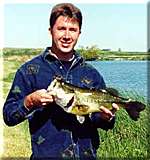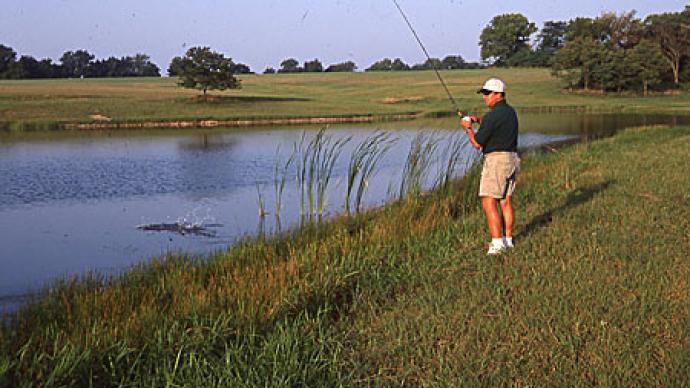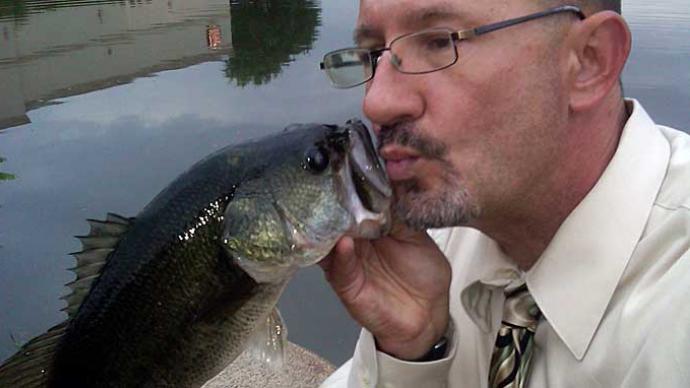
Many fishermen don't have shiny new bass boats with 250 h.p. outboards and trolling motors with 70 lbs. of thrust. They are either restricted to a small Jon boat or fish for bass from the bank. The latter are often at a disadvantage. Usually, they are denied most of the prime fishing areas. Some get mad, and others just quit fishing. But the true bass fisherman finds a way to get the bass. Bank fishing can be a deadly way to catch bass.
I've bass-fished from the bank most of my life and have had tremendous success. I have caught all of my 7 lbs.+ bass from the bank. I recently caught a twelve-pound bass right on the bank. The bass was under a weed bed within casting distance. She had been busting some large minnows. I flipped my floating worm a foot past the disturbance. Two jerks, and then I let it fall. A huge boil twisted the water. The rest is history.
First thing, go scouting. Find a part of your lake where there are few houses or people. You might have to go through thick brush or muddy areas, so wear suitable clothing. Remember always to ask permission to cross or fish on someone's property. Try to find an area that receives low fishing pressure but has a good bank structure. Try to find " bassy " areas such as reeds, bullrushes, water hyacinths, coontail moss, and lily pads. Pulling weedless soft plastics through and around the vegetation can produce big bass. Keep an eye out for trees that have fallen into the water. These are great bank structures for jigs, spinnerbaits, and shallow running crankbaits.
Points are a crucial bank structure too. Some have boulders, brush piles, stumps, and fallen trees. Even if the point doesn't have any cover, the point itself is a structure and will attract bass. This is because the point can have a wide range of depths. A point also serves as an ambush point for passing schools of shad and other smaller fish. These are just a few reasons why points are favorites among crankbait and Carolina rig fishermen.
If you fish moving water, scan the surface for boils and breaks. This means there is some structure blocking the current. And that's where the fish will be. They sit there and wait for a passing meal and pounce on it when it comes by. Would you rather waste all your energy swimming constantly in the current or get behind something that blocked it? Think like a bass, and you will find them.
Here is an example of how bass fishing from the bank in current blockers can catch fish: I fish a small lake connected to three ponds by little rock creeks. When it rains hard enough for a reasonable time, the last pond fills up and spills water into the creek. This starts a chain reaction. Eventually, it all ends up in the lake. In this process, a lot of bream and minnows get washed down. When they reach the lake, the bass go into a feeding frenzy. You can throw any lure in your box out there and catch a bass. The bass lie below a rocky drop-off while the current passes overhead. When a meal swims by, they bust it! Usually, shallow running crankbaits are my choice for this situation.
When fishing a new area and you want to find out where the bass are holding, fish a lure that can cover water efficiently, such as a Rat-L-Trap, buzzbait, or crankbait. If you only get a few hits or the bite tapers off, switch to slower baits like a plastic worm or a slow-rolled spinnerbait.
One last tip: use a rod no longer than six feet if you are around trees. This should decrease your chances of hanging up on a branch when you cast. It's a real pain to lose your favorite lure to a tree.
Just because you can't fly a 100 m.p.h, glass-blaster to a secret hole way out in no man's land doesn't mean you can't find bass. If you are observant, patient, and flexible, you can catch bass from the bank in any lake.




